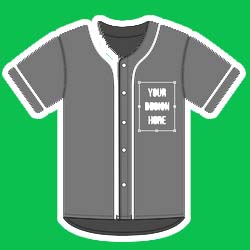


Let’s explore the steps to craft high-quality mock ups that effectively represent fabric texture, fit, and color.
Creating realistic t shirt mockup is essential for apparel designers, e-commerce store owners, and marketers aiming to showcase products with accuracy and appeal. This guide offers a straightforward approach to designing mock-ups that look true-to-life and grab attention, helping users make informed purchasing decisions. Let’s explore the steps to craft high-quality mock ups that effectively represent fabric texture, fit, and color.
1. Choose the Right Software
Selecting software tailored for graphic design is the first step. Programs like Adobe Photoshop, Illustrator, or free alternatives such as GIMP provide powerful tools for editing, layering, and color matching. These platforms enable precise control over every detail, from shadows to highlight effects, ensuring an authentic appearance.
2. Select a High-Quality Template
Templates play a key role in achieving a professional look. Various resources, both paid and free, offer T-shirt templates in diverse styles, angles, and fits. High-resolution files provide the clarity necessary for online retail or social media. Ensure that the template’s style aligns with the brand’s target audience, whether it’s a casual look or something more formal.
3. Add Custom Designs Using Layers
Layering is crucial for realistic mock-ups. Import your design onto the T-shirt layer, adjusting size and position to fit naturally. Most graphic design software allows users to work with smart objects, a feature that enables resizing without sacrificing quality. Blending modes can enhance realism, integrating the artwork with the fabric to make it appear as if printed directly on the shirt.
4. Adjust Lighting and Shadows
Lighting and shadows make mock ups look convincing. Experiment with light sources to add depth, particularly when the T-shirt has folds or wrinkles. Shadows beneath and around designs enhance the sense of three-dimensionality, while subtle lighting adjustments bring out the material’s texture and detail.
5. Choose Realistic Textures
Textures should represent the actual material type. Cotton, polyester, and blends each have unique qualities, so ensure the mock up reflects this to offer an accurate impression. Some programs offer texture overlays, letting you recreate various surfaces and weights. For instance, a heathered texture works well with casual designs, while smoother textures suit more formal styles.
6. Preview in Various Colors
Testing different colors ensures the mock up is versatile. Colors can alter the way designs appear, so experiment with diverse shades, especially if selling multiple options. Color adjustments can be made through hue and saturation tools, providing a clear view of how designs work across the spectrum.
7. Present with a Suitable Background
The background of a mock up contributes to its overall appeal. Consider neutral, lifestyle, or brand-specific backdrops that highlight the T-shirt without overpowering the design. Simple backgrounds work well for product-focused images, while lifestyle shots show how the T-shirt might look in real-world settings.
Final Thoughts
Creating realistic T-shirt mock-ups requires attention to detail, creativity, and familiarity with design tools. By carefully following these steps, you can produce visuals that accurately represent your product, resonate with audiences, and enhance brand appeal. Well-made mock-ups can bridge the gap between digital representation and physical reality, ultimately driving interest and sales.
Author resource:-
Elmon advises people about fashion, clothing and t shirts mockup.
